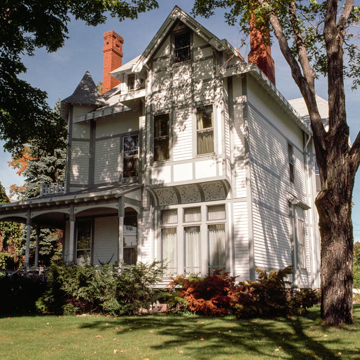High on a ridge with a magnificent view of Presque Isle, Marquette Harbor, and Lake Superior, the owners and managers of Marquette iron and shipping industries lived in large houses next to their furnaces, railroad yards, and docks. Here Peter White, Edward Breitung, John Longyear, and others built houses after designs by Detroit and Chicago architects. They are comparable to the houses on Summit Avenue in St. Paul, Minnesota, but scaled to the economic situation in Marquette.
From 1890 to 1904, before it was dismantled, loaded onto railroad cars, and transported and rebuilt in Brookline, Massachusetts, the John and Mary Beecher Longyear House was the largest and most carefully planned house of Lake Superior sandstone ever constructed in the region. It overlooked the lake from its one-block site on the high bluff at the corner of East Arch and Cedar streets. Built in 1890 to 1892 for Longyear (1850–1922), a timber and mineral lands speculator, the Richardsonian Romanesque house was designed by Demetrius Frederick Charlton and landscaped by Frederick Law Olmsted.


